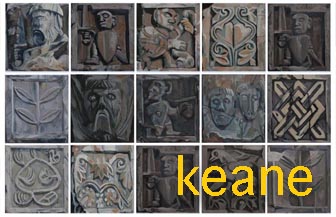Many Italian proverbs, especially regarding the weather, are associated with this day. One of the most popular sayings is, “Per la Santa Candelora se nevica o se gragnola, dell’inverno siamo fora, ma se è sole o solicello, siamo sempre a mezzo inverno”
– For the Holy Candelora, it it snows or if it rains, we are through with winter, but if there is sunshine or even just a little sun, we are still in the middle of winter’. In English-speaking countries, where the feast of Candelora is known as Candlemas Day (or Candle Mass), the saying is similar to the Italian: If Candlemas day be sunny and bright, winter will have another flight, if Candlemas day be cloudy with rain, winter is gone and won’t come again.
Traditionally the Western term “Candlemas” (or Candle Mass) referred to the practice whereby a priest on 2 February blessed beeswax candles with an aspergilium for use throughout the year, some of which were distributed to the faithful for use in the home.
So what is the connection between these symbolic religious celebrations and the weather?
The answer is – Astronomy.
The transition point between seasons. February 2 is a cross-quarter day, halfway between the winter solstice and the spring equinox.
For millennia, people in the Northern Hemisphere have noted that if the sun comes out at the mid-way point between winter and spring, winter weather would continue for another six weeks. As one might imagine, for humans living a subsistence existence the difference was an important one, with implications for survival as well as hunting and crops. It is not surprising that rituals and celebrations were linked to it. source Wikipedia and The Florentine
Click on the link below to hear Natale Bertolini recite the Candelora poem (in Italiano)






And then there are those wacky Americans who never seem to take anything seriously: groundhog day
And then there's this.
And was the double sunset visible? It's around this time too. There are many events to mark and celebrate mid-winter.
Grande Natale!
When is double sunset day??
If the conditions are right and you are in the right place at the right time, it is possible twice a year to see the doppio tramonto – the double sunset. This is when the sun drops down behind the mountains and then shines through the natural arch of the Monte Forato.
It happens twice a year – around the 30th January and then again around the 11th November
This year it was once again obscured by low clouds 🙁
Yep. In America, it's Groundhog Day. If a certain large rodent in Pennsylvania casts a shadow — as he did — we have more winter coming. Sure enough, our latest forecast calls for snow in the morning.
great story isn't it? Sure. I have been seen too, of late, gathering wood. : )
I also found this very interesting: – That Imbolc was an important time to the ancient inhabitants of Ireland can be seen at a number of Megalithic and Neolithic sites, such as the Mound of the Hostages at the Hill of Tara. At this site in County Meath the inner chamber of the passage tomb is aligned with the rising sun of both Imbolc and Samhain,[5] similar to the winter solstice phenomena seen at Newgrange, where the rising sun shines down the passageway and illuminates the inner chamber of the tomb.
-with regard to the double sunset phenomenon at mid-winter and what seems like mid-autumn (Nov 10ish) and it all ties into the legend that Barga may have been an important site of sun worship and the study of astronomy.
It's all wonderful stuff and in any case it means: You're out of the woods, you're out of the dark, you're out of the night, step into the sun, step into the light…